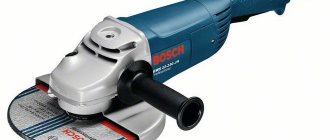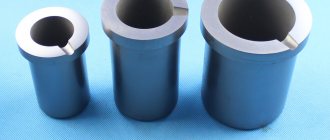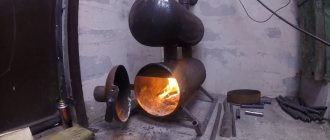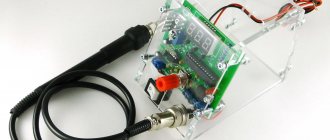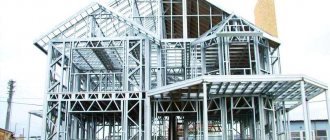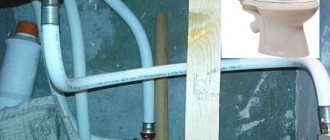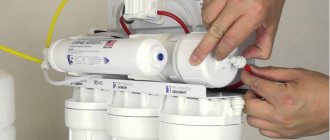A good sauna requires a good electric heater.
In essence, an electric heater is an electrically heated roaster, made in the form of a small metal box and equipped with a basket for laying stones.
In the upper third of the steel box, heating elements are installed in a metal cage, on top of which rocky ballast is laid.
Often, owners of large baths, in addition to a wood-burning stove, install one or two electric heaters. One stove-stove is placed near the entrance, the second in the center of the steam room. As a result, you can raise the heat in half an hour and dry the bathhouse at the end of the procedures.
Design and operating principle
To understand how an electric furnace works, you need to understand the structure of the structure. It consists of several related elements:
- containers for filling stones;
- holes for air circulation;
- electric air heater;
- metal casing;
- equipment control panels.
After connecting the equipment to the network and turning the temperature setting toggle switch, the electrical element begins to heat up. Thanks to the hole in the metal casing, the heat spreads throughout the surrounding rooms. Gradually, the stones are heated in the heater, which you just need to pour water on to create steam.
Advantages of using an electric heater
The main thing why an electrically heated device is valued and loved is the precise heating settings:
- With the help of a branded electric heater, you can manually gradually adjust the heating of the stone ballast and, accordingly, select the most comfortable temperature and air humidity in the steam room;
- Maintain certain aromas in the sauna air, change them to suit the tastes of visitors, and even treat with steam from herbal infusions;
- The process of controlling the “roll-up” of steam becomes relatively safe, without thermal shocks and burns, both for the bathhouse attendant and for ordinary bathhouse visitors.
For your information! With the help of an electric heater, it is quite possible to correct the shortcomings made during the construction of a sauna, to raise the heat in a cold and damp sauna to the level of a real Finnish sauna.
It is quite difficult to choose the right conventional wood-burning heater for a steam room; it is quite difficult to guess its location and power. Often it is necessary to insulate the walls in the bathhouse and add ventilation. Therefore, often, instead of fussing with construction, owners install a large wood-burning or coal stove in the bathhouse, most often a brick one with a fireplace, and for a steam room or hot sauna they install an electric heater.
Connecting equipment
The sauna stove is practically made with your own hands. All that remains is to connect it and check its functionality. It is very important to correctly calculate the power of the stove and select a power cable for it. The power of the stove is quite large, so the cable must be selected with a small margin. And the thickness of the core must be appropriate, the insulation must be reliable. The connection is made through a thermostat. If you mainly enjoy dry steam, the regulator can be installed directly in the steam room. But it is much safer to place this element in the dressing room. Then the version of the Russian bath will be safe for visitors to the steam room.
Don't forget to ground the heater body. It is important!
Now the basket needs to be filled tightly with stones. It should be remembered that the larger the total area of contact between the stones, the higher the heat transfer will be. It is advisable to use stones of flat shape and different sizes for the stove. Then you will have the opportunity to pack them in the basket as tightly as possible. Try to maximize the height of the stones, since the volume is also very important: the larger it is, the longer the high temperature will remain in the steam room.
Materials and tools
When they talk about making an electric fireplace with their own hands, they first of all mean independent design and assembly by the user of the portal. In most cases, the hearth is purchased in a store.
As already mentioned, a portal is simply a box with decorative lining. It is not exposed to high temperatures, even if the electric fireplace is equipped with heaters, so almost any sheet material can be used as frame cladding:
- drywall;
- plastic;
- aluminum panels;
- steel sheets in a polymer sheath or painted with powder paint;
- glass;
- particle boards and fiberboards: chipboard, fibreboard, OSB, MDF (can be produced in laminated form);
- plywood;
- board: solid or parquet (multilayer).
The portal can also be made of piece materials - brick or stone, but due to their massiveness and high cost, these options have not gained popularity. Usually a frame is constructed, and plasterboard is used in most cases for sheathing. This is a fairly rigid material, it holds its shape well, at the same time it is easy to process, has a low weight and, most importantly, allows the use of quite impressive-looking cladding.
Decorative gypsum stone for portal cladding can also be made at home
Another useful feature: if you make a perforation in the cardboard using a needle and moisten the gypsum core through it, then you can make a curved surface from a rigid flat sheet, for example, an arched vault.
As for plywood and solid wood, these materials should be used with caution. Constantly circulating warm air can cause them to dry out with subsequent deformation. This also applies to the frame if it is made of bars and slats.
Factory production is not the only option. In a simple version, you can reproduce it yourself, although, of course, the homemade product will look less attractive.
Using candles in the fireplace you can create a real live fire
Instead of an electric fireplace, you can install in the portal:
- Electronic photo frame with a picture of a flame. A more interesting option is a photo frame with the ability to reproduce primitive animation, into which you need to load a “cartoon” with dancing flames.
- If the costs don’t bother you, you can go even further: install a small TV in the portal that plays video from a flash card, and record a video for it with a real fire.
- The image of fire is combined with a system of mirrors, thanks to which the observer sees a three-dimensional illusion of flame.
We invite you to familiarize yourself with: Do-it-yourself bathhouse ceiling, instructions for construction
Tools
What tools do you need to prepare:
- plumb line and building level (for installation without distortions);
- metal scissors or grinder with a thin cutting disc;
- stationery knife;
- spatulas;
- sandpaper;
- screwdriver or screwdriver.
Calculation of parameters and design
To simplify the selection of the characteristics of the electrical part of the heater, use the following dependencies:
- For models equipped with a built-in supercharger or steam generator, the electrical power is selected at the rate of 0.8-1 kW per 1 m3 of steam room;
- For conventional electric heaters, the thermal power must be at least 1.5 kW/m.
An electric heater can become the basis for a small apartment sauna. In order to warm up a cabin with a volume of 200x100x250 cm and provide the required steam condition, you will need a heater with a power of at least 2 kW. The only thing is that for a sauna you will need an electric heater with a steam generator. There is no other way to warm up the room and get the desired temperature without the risk of fire and thermal burns.
Good ventilation in the sauna also plays an important role when connecting the stove. It will provide sufficient oxygen levels, maintain freshness and retain steam. If you organize it correctly, you will save energy, especially during warm-up.
The photo shows the optimal ventilation scheme with an exhaust hood
Typically, ventilation in a heater can be forced or natural.
- With forced ventilation, it is necessary to ensure air supply through the incoming air valve above the heater, at a height of more than 50 cm. In the diagram, this zone is shown as a hatched area with the letter “A”. This type of ventilation is recommended.
- The exhaust duct should be installed as far and low as possible relative to the heater.
- If natural air circulation is used, the air should come from the area below or next to the heater (shaded area "B" in the diagram). In this case, the hood is installed as far as possible from the heater and at least 1 meter higher relative to the supply. Usually the hood is made under the shelf, or a gap is simply left under the door.
Forced and natural ventilation
At the portal design stage, you need to pay attention to the following points:
- Dimensions. The portal should have such dimensions that it and the hearth look proportional. Usually the body is made twice as wide as the hearth, and 1.5 times higher in height. Thus, if the width and height of the fireplace are 50 and 70 cm, then for the portal these same parameters will be equal to 100 and 105 cm. If you intend to install the fireplace not near the floor, but at a certain height, you should choose a wider model - with this placing the fireplace will look better. In this case, the width of the portal should not be doubled, but slightly smaller.
- Dimensions of the combustion hole. This hole should be such that its edges do not block the fireplace’s own frame. This rule should be followed regardless of whether the frame is neutral or made in any genre. If the electric fireplace is stylized, then the design of the portal will have to be made accordingly. If you want to maintain creative freedom, look for an insert hearth - a model that has no frame at all.
- Structural elements. The main structural element of the portal is the vents that ensure air circulation. If there are none, the heating element of the electrical fire may overheat.
It is also advisable to provide the portal with a shelf or hooks from the inside to secure the power cable.
Drawing
Although it is difficult to imagine a more primitive design than an electric fireplace portal, it is better not to limit yourself to abstract design and sketch out a detailed drawing of the product.
When designing, the drawing indicates all the executive dimensions of the future structure
Firstly, it will be easier to develop a specification - a list and quantity of all necessary materials down to the last screw. Secondly, the drawing will immediately reveal minor errors and shortcomings that were overlooked when designing in the mind.
Models and prices
Popular models:
- Sawo Mini X MX-30NB-Z. A compact model of furnace equipment that can be mounted on the wall. Suitable for heating steam rooms with a volume of up to 4 m3. Power - 3 kW. Suitable for connection to 220 and 380 volt networks.
- Amazon SAM-B15 15 kW. A powerful model that can only be installed on the floor. Suitable for heating rooms up to 23 m3. Connects to 380 volts only. The case is closed, made of stainless steel.
- SteamFit 3 Teplodar. Compact electric oven designed to be mounted on vertical surfaces. Used to heat rooms up to 12 m3. Power - 8 kW.
- Harvia Cilindro PC70E. Model with a large heater - up to 90 kg. Equipment power - 6.8 kW. Suitable for heating rooms up to 10 m3. Installed on the floor or any flat surface.
- Electromash 9 kW. Simple oven equipment. Placed on the floor, does not have fastenings to hold it on the wall. Designed to heat rooms up to 15 m3.
- ECM 1-6 6 kW. Furnace equipment that can be installed on a flat foundation or hung on a wall. Designed for heating rooms up to 10 m3.
- Kristina Classic 4.5 kW Polytech. Designed to be placed on the floor. Equipment power - up to 4.5 kW. Suitable for heating rooms up to 6 m3.
- Peko EH-45. A compact unit for a bath that can be mounted on the wall. Power - up to 4 kW. The stove is designed to heat rooms up to 6 m3.
- Harvia Topclass Combi KV60SE. Furnace equipment for hanging on walls, strong vertical supports. Suitable for heating steam rooms with a volume of up to 8 m3. Power - 6 kW.
- Sawo Tower TH3-60 NB. A specific design that has a long cylindrical heater extended upward. It can be placed on any flat surface. Suitable for heating steam rooms with a volume of up to 8 m3. Power - up to 6 kW.
Preparatory stage
Before you start making a false fireplace, you need to think about its installation location and power supply.
Selecting a location
Work on creating a homemade electric fireplace should begin with choosing a place for it, since the shape of the portal will depend on this. The following options should be considered:
- Wall-mounted location: this is the most preferable option - it is the wall-mounted electric fireplace that is most similar to the real one. But such an installation is possible only under one condition: the room must be quite spacious. In the wall-mounted version, the electric fireplace is made rectangular.
- Corner: this method is used if the room is of modest size. The corner is usually the least used area, so installing a false fireplace here has almost no effect on the amount of free space. The corner portal will no longer have a rectangular, but a triangular base.
A corner electric fireplace will not take away useful space from the room - Wall-mounted option: as you know, a floor-mounted fireplace is considered classic. But the mounted option will look good, provided that the space in front of it, at least a few steps away, is not cluttered with anything.
- Built-in fireplace. This option will significantly save space.
An electric fireplace built into the wall is ideal for small rooms.
If the problem of lack of space is so critical that none of the above options are suitable, an electric fireplace can be built into a partition or furniture. Especially for such tasks, “ultra-thin” fireplaces with a depth of only 7 cm are produced. By the way, it’s worth considering that perhaps such an almost flat fireplace could be made wall-mounted.
Some users are faced with a problem: no matter where they place the fireplace, it always ends up close to one or another piece of furniture - a table, sofa, pouf, etc. The way out of this situation is to create a wall-mounted fireplace located at a certain height. In this form it will not lose its decorative qualities. At the same time, at any distance from the wall and even under the fireplace itself, it will be possible to place a low piece of furniture.
Hanging electric fireplace significantly saves space
Electricity supply
An important point: at the preparation stage, you should think about the power supply to the fireplace. To prevent the impression of the decoration from being spoiled by an extension cord stretched across the entire room, you need to attach an electrical outlet to the wall near the installation site of the portal. In this case, it is useful to listen to these recommendations:
- You should not install the socket so that it is inside the portal, although this option seems to be the most successful from an aesthetic point of view. A false fireplace, like any other electrical device, is potentially dangerous, and the user should be able to quickly unplug the power cord if something happens.
- It is better to install an outlet with a switch. After installing the fireplace in the portal, the standard power button will most likely be difficult to access, and it will be inconvenient to constantly pull out and insert the plug into the socket to turn the device off and on.
We invite you to familiarize yourself with: Assembly of the passage of a vent pipe through the roof
Electric heaters
Industrial electric heaters
Electric sauna stoves are good because they heat up quickly and maintain the required temperature. They do not require smoke exhaust. They ensure cleanliness because they do not use solid fuel, which produces ash.
What are their advantages?
- Firstly, it is ease of use . The electric sauna stove is connected via a control panel, allowing you to adjust the parameters to suit your personal preferences and turn it on and off at any time.
- Secondly, this is the presence of a thermostat and a fuse against overheating.
- Thirdly, this is safety . There is no possibility of carbon monoxide poisoning.
- Fourthly, it is protection from accidental burns , since the special housing and compact dimensions prevent this possibility.
And of course, there is a minus, but perhaps the only one is the electrical energy consumed, which is not very cheap. Electric sauna stoves of various capacities are produced, and they are based on heating heating elements.
Installation
- Choose an electric sauna stove based on the rated voltage. Up to 7 kW, stoves are manufactured for a voltage of 220 V, above 7 kW they are manufactured for 380 V;
- When installing the stove, the connection to the network occurs through an RCD (residual current device).
Attention. Install a ground if you don't have one, then ground the heater body with a copper conductor. The conductor cross-section must be at least 4 mm2.
Job
Let's look at how electric bath stoves work using the example of one type of electric stove. The body of the electric furnace is made of stainless steel in the form of a box.
Electric stove-heater
heating elements inside , and between them and on top there are stones. Why is stainless steel used? When heated, it does not burn and does not emit harmful substances. The heating elements in this oven are also made of stainless steel. The tank located inside has a neck with a door for adding water.
This unit is monitored by electronics located outside the steam room and assembled into a control panel. From it the control wires go to the heating elements.
Remote Control
Heating block
It works through a timer and turns on the heating element. The maximum permissible heating temperature of the heating element is 650 degrees. The heating sensor is activated when the temperature drops to 600 degrees, which is indicated by the “Heating” light.
Control circuit diagram
Ready block
This block is responsible for turning off the mechanical timer in the “Heating” mode. When the stones are warming up, the timer is in standby mode. The control unit is responsible for the operation of the temperature sensor. The timer is triggered when the top layer of stones reaches 550 degrees and the “Ready” light comes on.
At this point you can throw water on the stones. The temperature of the top layer of stones approaches the temperature of the heating elements. This mode is the most economical. The readiness block is necessary for the long service life of the heating elements.
Lighting block
This block is a simple toggle switch for controlling lighting in a steam room. There are mechanical or electronic .
Control panel type:
- Simple, there are three lights on the display: “Network”, “Heating” and “Ready”.
- Complex, where the on and off times can be programmed.
Electric sauna stoves consume an average of about 4 kW.
What is an electric heater with a steam generator?
A modern electric sauna stove can be equipped with a steam generator. Depending on the settings, the steam generator can fill the steam room with light or wet steam. That is, thanks to a stove with a steam generator, you can create the atmosphere of a real Russian bath, a Turkish hammam, and a Finnish sauna.
The Russian bath is famous for its healing properties. Thanks to rich and moist steam:
- skin pores are perfectly cleansed;
- Toxins are removed from the body along with sweat;
- steam, especially saturated with phytoncides, heals the respiratory system and treats a sore throat.
To get a sufficient amount of steam, a heater is built in a traditional sauna stove - a container filled with hot stones, onto which water (or, even better, herbal infusions) is supplied from time to time to generate steam. Modern electric sauna stoves can be equipped with a steam generator.
The big advantage of an electric furnace with a steam generator is that all processes in the heating unit can be automated.
The main task of the unit with a steam generator is to convert the water poured into the device’s reservoir into steam. There are several ways to do this:
- water can be heated using heating elements;
- for heating, a current is used that is passed between two electrodes;
- Induction is used to convert water into steam (similar to microwave ovens).
Furnace models equipped with a steam generator allow you to adjust the parameters of the steam produced. The device is capable of producing steam of different temperatures, the temperature range is from 30 to 95 degrees.
As a rule, the design of a unit with a steam generator includes the following elements:
- a reservoir into which water (or herbal infusions) is poured;
- block for water preparation;
- pumps: for pumping water and releasing steam;
- the steam generator itself;
- automation and control unit.
Please note: the automation unit for ovens with a steam generator includes a safety system. In case of deviation from the normal operating mode, the sensors will turn off the steam supply.
Modern models of units with a steam generator are very economical; they consume a small amount of energy (the exact value depends on the power).
On the market of special equipment for a bath, there are a huge number of offers of electric heaters for every taste and color. There are designs with an additional fan that blows air through the hot stone. Many bathhouse owners like systems with drip addition of aromatic liquids, from beer to linden infusion. In order not to be distracted by the heating process, you can choose an electric heater model with remote control and programmable bath heating time.
Most often, for a small bathhouse, connoisseurs and connoisseurs of steam choose more advanced models equipped with a steam generator. The question often arises: why install a device in a steam room that produces a stream of hot water vapor, if you can get by with an ordinary electric fryer or, at worst, a wood-burning sauna stove.
The fashion for black-style bath procedures is long gone; only a few enthusiasts are able to fight the smoking and smoky stove in a Russian bath. Most owners prefer a comfortable stay in the steam room.
The steam generation system evenly distributes air heated to the required temperature, aromatized and saturated with hot water vapor, in the space of the sauna or bathhouse.
Essentially, a steam generator is a coil or closed circuit equipped with an external heater, for example, an electric coil or a ceramic element. A fan blows air through the heat exchanger while simultaneously supplying a precisely dosed amount of purified water. The output is perfectly pure steam without splashes of boiling water.
At the same time, an electric heater with a steam generator for a sauna is a good way to change the thermal conditions of the room. Instead of the dry, overheated atmosphere of a Finnish bathhouse, the generator will help make it stronger, richer in steam and less hot, like in a Russian bathhouse. Well, for lovers of oriental, Turkish or Roman baths, it is quite possible to control the electric heater with your own hands and choose a cooler, more gentle mode, as in thermal baths or hammams.
Advantages of an electric sauna stove
But an electric oven can definitely be called more convenient to use. Please note a number of significant advantages of such a stove:
- It is small in size, so it can be used even in small spaces.
- This electric heater is installed quite simply and without the use of expensive materials.
- For an electric furnace, there is no need to additionally think about and assemble gas exhaust and ventilation systems.
- There is no need to stock up on fuel.
- The need to clean the stove from combustion products automatically disappears.
The only drawback of electric ovens is their high energy consumption. But now the question is not about savings, but about functionality and reliability. An additional benefit from an electric heater is that it can be used both to produce dry steam and for use in a Russian bath.
Modern models of electric heaters
The appearance of modern electric sauna roasters amazes with the variety of design of the heating system and elegant design solutions of the body. Almost all models are made in a modern design, with beautiful shapes and contours, but this is not the main thing. The equipment operates on mains power, so it may pose a certain threat to people.
Experts recommend paying attention to easy access to some parts of the electric heater:
- The temperature sensor on the heating elements burns out first, so you will have to change it several times, especially since even expensive branded models of sauna heaters have cheap Chinese heating sensors. The price of the product is at least 70 dollars;
- Device for monitoring the water level in the steam generator. You will have to monitor it and periodically check its operation, otherwise you can burn out the steam generator;
- Panel and remote control. They often fail due to improper storage and use. The device is not cheap; for some models the price for the control unit can reach $400.
In addition, you will need to regularly rinse the steam generator container and clean the stones from plaque. On average, full maintenance of an electric heater with a steam generator for a bath takes no more than 1-2 hours of time per year, so an electric stove is considered more convenient than a wood stove.
If necessary, you can make an electric heater for a bath with your own hands, or look for a branded industrial model with a corner, central or wall location. The case is most often made of stainless steel or special zirconium enamel is applied. Paintwork for heaters is rarely used due to the high price of heat-resistant powder paints.
Advice! If the water used in the bath contains a lot of calcium salts, then it is best to choose an enameled model with a matte finish.
For amateurs, electric heaters are made with lining from the most popular bathing stone, chalcopyrite. It turns out very beautiful and at the same time reliable, since any broken fragment of the finish can be easily returned to its place using heat-resistant glue.
We invite you to familiarize yourself with: Do-it-yourself frame-panel bathhouse - how to make it (photo)
Electric sauna heaters can be divided into two groups according to heating method:
- Classic version with basket loading at the top of the body. This option is convenient in that the main flow of hot air is directed under the ceiling in a strictly vertical direction;
- Open electric heaters are used in baths with a large steam room volume. As a rule, they are installed on opposite sides of the sauna walls and adjusted so that the entrance to the room warms up more, and a stable temperature is maintained on the shelves.
The latter option is considered more effective, but less safe to use. In addition, you need to think about what are the best stones for this type of electric heater. If you don’t know what to choose, it’s best to order a special set of crushed calcite or chalcopyrite. As a last resort, you can use crushed light pebbles or pebbles of silicon-containing rocks as stones for an electric heater.
Advantages and disadvantages
The popularity of electric heaters is due to their advantages, which make them stand out compared to traditional stoves. The main advantages include:
- Effective heating of the room. The units quickly and evenly heat the air in the steam room, and also maintain a stable temperature throughout the entire period of operation.
- No chimney. When heating with electricity, there is no combustion of fuel and the formation of smoke, which must be removed outside the room.
- Durability. The absence of an open flame guarantees long-term operation of the device.
- Ease of use. Simply plug in the device and set the required temperature.
- Safety. The absence of smoke and a hot chimney prevents carbon monoxide from entering the steam room or ignition of wooden structures.
- Compactness. Small geometric dimensions and weight allow the heating unit to be used even in a small room.
The abundance of positive aspects of an electric fireplace is still diluted with some disadvantages. The main one is electricity consumption. If you can prepare firewood for a traditional stove yourself without buying it, then you will have to pay for the electricity consumed. In addition, you will need to lay a cable that can withstand the load from a working device.
On a note!
Supporters of the traditional steam room point to another drawback of the electric stove - the loss of authenticity of a real Russian bath without the crackling of burning logs in the hearth.
Making an electric fireplace: step-by-step instructions
The question arises, how to make an electric fireplace with steam with your own hands? Let's figure it out. Models of electric fireplaces are different and they are made from different materials. For example, such as: plasterboard, stone, noble wood, chipboard, plywood and many others.
To create an electric fireplace with your own hands, no special skills are required, the main thing is to strictly follow the instructions
After all the preparatory work has been done, you can begin making the electric fireplace itself.
The pedestal is a tabletop laid on a frame made of a metal profile about 50 mm high. The tabletop can be made from various materials:
- thick plywood or several thin plywood sheets glued together;
- solid wood or a shield made from several boards;
- chipboard.
The most attractive look are countertops made of laminated MDF (the board is enclosed in a plastic shell). Such a product can easily be found on sale.
The pedestal for an electric fireplace can be made from chipboard.
The tabletop for a wall-mounted fireplace has the shape of a rectangle, for a corner one - a pentagon. In size it should be several centimeters larger than the dimensions of the portal. A plinth of the same color as the table top is installed as side walls around the pedestal.
As already mentioned, the frame is best made from a metal profile specifically designed for the installation of plasterboard structures. It comes in two types:
- rack-mount (for a portal you will need a variety with section dimensions of 50x50 mm);
- guide (use standard size 50x40 mm).
To fasten profile sections together, you should use special short self-tapping screws 11–13 mm long, which are popularly called “bugs” or “seeds.”
Installation of the frame is carried out in the following sequence:
- The section of the wall that will be covered by the portal is covered with a fire-resistant screen. For this purpose, it is better to use a sheet of tin with a basalt cardboard lining; a less successful option is an asbestos layer (has carcinogenic properties).
- According to the drawing, markings are applied to the wall and table top, while the vertical/horizontal lines are controlled by a plumb line and level.
- Using dowels (to the wall) and wood screws (to the tabletop), a guide profile measuring 50x40 mm is attached according to the markings.
- A 50x50 mm rack profile is screwed to the guide profile using self-tapping seed screws, so that the result is a parallelepiped.
It is better to mount the electric fireplace frame from a metal profile designed for plasterboard - The frame is strengthened by installing ties from the same rack profile in each side face in increments of 20–25 cm.
On the front side, sections of the profile are attached that limit the opening, and inside there is a frame on which the hearth will be installed (if one is provided for in the project).
Doing the oven myself
Once you have decided on the type of oven, you can begin assembly. An electric furnace is used in a bathhouse for dry and soft air. Its design is as follows: a metal body with electric heaters installed inside, and a cage for filling with stones is installed in the upper part. You can make a stove with a closed heater, but it will take a long time to warm up. In addition, stoves with a closed heater do not provide an atmosphere of pleasant and interesting relaxation, since everyone wants to splash water on the stones and watch them steam.
The construction of such furnaces, especially in a metal casing, requires the necessary grounding. Measure the resistance, which should not exceed 5 ohms.
For self-assembly, you must follow certain rules, such as:
- Make a drawing of the structure, finding out the dimensions of the room where the installation will take place. Determinant with the dimensions of the structure and its location.
- Calculate heating elements depending on the power of the stove and its size.
- Begin assembling the stove by securing the heating elements to the frame using connecting jumpers. The 3 mm wide steel sheet must be connected using bolts and welding.
- Make a filler of stones so that there are no gaps or empty spaces.
- Attach the casing, it can be made of steel. And if possible, line the adjacent walls with brick, as it serves a protective function against fire.
- Install a thermostat into the installation to heat the stones.
- Check if our oven is working properly and performs its intended functions.
Such stoves have many advantages, due to which they are popular nowadays for generating heat in baths or saunas.
Despite their high cost, they are easy to use, and making them yourself is quite simple.
sdelaypechi.ru
Make an electric heater with your own hands
Building a brazier-heater for heating a steam room in a bathhouse is not particularly difficult, even for a person unfamiliar with its structure. First of all, you will need to install and install a protected electrical wiring system designed for high power in the steam room.
For a standard electric heater, you will need to use a three-phase network with a core cross-section of at least 10 mm2. If you are afraid of the presence of high voltage in the bathhouse, then you can get by with just a steam generator mounted in the bathhouse, as in the diagram.
A standard heater is made in the form of a perforated steel box or basket mounted on a heat-resistant base.
Such a basket can be cut from a sheet of stainless steel or welded using argon welding from a medical tube. It makes no sense to use conventional fittings, even with galvanic coating; the metal will still rust over time.
The second step is to select a heating element. For an electric heater in a bathhouse, one or more heaters from an electric stove or oven are suitable. Spirals from boilers, boilers, and kettles cannot be used to build an electric heater; they quickly burn out due to the high heating temperature, reaching 180-200oC.
All that remains is to mount the elements inside the body of the electric heater, connect them in a parallel circuit through the control device and fill the container with crushed granite. The heating quality of a homemade electric heater will be no worse than that of industrially manufactured models.
Varieties
Electric furnace equipment is divided into separate groups depending on various factors. If we talk about the size of the heater, we can distinguish the following types:
- heater from 20 to 40 kg;
- models with containers for stones from 60 to 120 kg.
You can order a stove with a heater of any size. It can be located on top or on the sides of the body.
Depending on the connection to the power supply network, two more groups of furnaces are distinguished:
- 220 volt models. This is the most convenient connection option for any private area. There is no need to install bulky, expensive transformers or lay new cables. Such stoves are not suitable for large bath complexes.
- 380 volt models. The main advantage of furnaces is high power. They are suitable for heating large rooms. To install them, you need to lay new cables and install a transformer.
Types of electric furnaces
Another factor for dividing stoves into separate groups is the type of heating element. Varieties:
- Tubular - heating coils that are twisted into tubes. They are made of stainless steel. The strong point is the low price. Disadvantages: short service life, low strength.
- Tape - metal heating elements covered with a ceramic housing. They are difficult to damage by impacts, and they consume less energy than tube models.
- Combined - heating elements that consist of tape, tubular parts. Thanks to the combination of two types of heating elements, the strength of the overall structure increases and energy costs are reduced.
Electric ovens can be divided according to the location of the heating element. It can be located inside the case or outside.
Decorating an electric fireplace
You can decorate the portal of a false fireplace with stucco molding, which is fixed with glue. If the frame and cladding are strong enough, real plaster decor is used. It is better not to overload the plasterboard structure - use a lightweight imitation of polyurethane stucco.
A strong impression is made by the ambience created with the help of objects usually accompanying the fireplace. Tongs, a poker, a scoop for removing ash, a broom, etc. are hung on the portal or a stand next to it. Some of these items, for example, a scoop and a poker, can be installed next to the fireplace - as if they had just been used.
You can hang torch-shaped lamps on the wall on both sides of the portal.
Another trick from the same opera is to install a woodpile next to the fireplace. It is a box, quite high, but shallow - the bottom is cut in almost at the very top. Several real logs or dummies made of plastic or ceramic (sold in stores) are placed on it.
The surroundings in the form of a woodpile make the false fireplace more realistic
You can make a rather naturalistic dummy yourself using corrugated cardboard as a material. Here's how it's done:
- Parts are cut out of cardboard, which are then rolled into cylinders of various lengths and diameters. Larger cylinders will act as logs, while smaller cylinders will act as knots.
- Using wide tape and glue, we attach the “knots” to the “logs”.
You can make logs from corrugated cardboard that are very similar to real ones. - The finished dummies need to be painted and placed in a woodpile.
To make cardboard firewood look realistic, you need to paint it
A fireplace, even a fake one, significantly enriches the interior and brings into it a charming atmosphere of ancient romance from the times of chivalry. But such decoration will only be exclusive if the user makes it himself. We hope our ideas and tips will help you with this.
Power selection and installation
First, calculate the volume of the existing steam room and select the required number of heating elements.
For a wooden bath you will need to achieve a power of 1 kW per 1 m² of space. For a brick building, it will be enough to have a power of 0.8 kW for the same volume. As a rule, it is convenient for users to connect all electrical systems to a 220V network. In this case, all heating elements must be connected in parallel.
But first you need to prepare a sheet metal case, inside of which all the heating elements will be located.
There is no fundamental difference in the location of the heating elements: they can be placed either vertically along the walls or horizontally in the lower part of the body.
The latter option should be considered more preferable, since in this case the stove will operate with the highest possible efficiency. Convection and high thermal conductivity of the stone will contribute to this.
Heating elements should be mounted on a metal body very carefully, using asbestos sheets as a gasket between the heating elements and the metal. This material has a minimal heat transfer coefficient, so the housing will not heat up directly from the heating elements.
But it will have to be protected from infrared radiation. For this you will need a heat insulator with a reflective surface.
Above the heating elements, it is necessary to weld a metal grid made of thick wire or fittings. The grate must be strong, since a large mass of stones will be placed on it.
It is recommended to make the upper part of the heater as open as possible. This means that the stones must be kept from falling off the heater by a minimum amount of metal.
Try welding a kind of basket for stones from the same reinforcement. It won't look very good, but it can be decorated with elements that imitate forging. Such things will give the steam room a special charm, and you will be pleased to watch the creation of your hands.
Forged elements can be different: leaves, flowers, various kinds of curls. What is important here is not their quantity, but their skillful combination. Create a pattern that will be pleasing to your eye and weld all the elements of the resulting structure.
Electric heater, reviews
Bystryakov Alexey, Ufa
I have a domestic ECM in my bathhouse; I bought it because it’s inexpensive and easy to maintain. I’ve been using an electric heater for almost three years, I’ve completely switched the heating of my bathhouse to electricity and I’m happy with it. There is no smoke or suffocation in the steam room, and it’s safer with an electric heater; the neighbors have already renovated their wood-burning sauna twice.
Batalinsky Sergey, Zelenograd
I read reviews about the electric sauna heater, but for a long time I doubted that it would be too expensive to heat the steam room with electricity. Friends persuaded us and installed a Turkish electric heater in two hours. Over two years of weekly operation, there was only one breakdown - the contact on the heating element burned out. I took it apart, tinned all the contacts of the electric heater, and now, like some holiday, everyone gathers in our bathhouse.
Tags: fireplace, hand, sauna, your own, electric
« Previous entry
